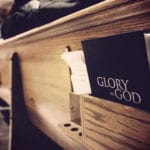Surely one of the most striking images of this extraordinary year was the toppled statue of Edward Colston being rolled through the streets of Bristol, England by a furious mob, in June. The statue had been erected in 1895 (174 years after Colston’s death) in recognition of his philanthropy. In his lifetime, Colston had endowed the city with schools, hospitals, homes for the poor as well as churches, including Bristol Cathedral.
Why do the wicked prosper?
But a significant proportion of Colston’s wealth came from the slave trade. During his involvement with the Royal Africa Company between 1680-1692, it is estimated that 84,000 men, women and children, branded with the insignia of the Company, were transported to the Caribbean and United States—including perhaps 19,000 slaves who died in transit.
And yet, the man himself was long gone—unharmed by the insult and injury inflicted upon his effigy.
So there was a cry for justice in the actions of the mob: he profited from the misery of others and was never made to pay. In some sense, the mob wanted the statue—in the absence of the man—to bear the punishment for his sins. As they daubed him with paint, bound his feet with rope and dragged him from his pedestal, it was a spectacle of righteous vengeance.
And yet, there was something unmistakably hollow, even pitiable about the scene. The man himself was long gone—unharmed by the insult and injury inflicted upon his effigy. The toppling of his statue could not provide any real redress to his victims. It was merely the triumph of appearance over substance.
No one is righteous, not even one
The same might be true of the protesters themselves. Perhaps it is true that none of the mob who railed against Colston had ever purchased a t-shirt or gym shoes or smartphone that was made by someone whose labour was not fairly compensated. Perhaps none of the crowd that cheered as the bronze effigy sank to the river bottom ever profited from the exploitation of others, or the desecration of the environment or systemic poverty. Perhaps they had never eaten at a restaurant staffed by illegal workers who are not paid or not free to leave their employers’ premises. Perhaps they had never purchased cannabis grown by slave labour[1] or supported human trafficking by using pornography (or sexual services) involving enslaved sex-workers.[2] Perhaps Colston was blind to the great sin of his age. Will history judge us innocent of the sins of ours?
Perhaps Colston was blind to the great sin of his age. Will history judge us innocent of the sins of ours?
Alexander Solzhenitsyn, survivor of the Soviet gulags, famously said ‘the battle line between good and evil runs through the heart of every man.’ The apostle Paul put it even more starkly: ‘There is no one righteous, not even one … All have turned away; there is no one who does good, not even one.’ (Rom 3:10) The apostle reminds us that the dilemma of Colston is inherent in the human condition. Whatever ‘good’ we do is indelibly stained and fatally compromised by the evil we cannot avoid (and maybe can’t even see).
… making peace by his blood shed on the cross
What then of the cry for justice? The oft-asserted decline of Christianity in the West is attributed, in part, to the rejection of a God who judges. But such distaste has always been a luxury. In every part of the world where oppression and tyranny are commonplace, those tyrannized have found strength to endure in the idea of a God who will hold evil people to account. Such a hope was expressed in the gospel songs of African American slaves and their abolitionist supporters:
Mine eyes have seen the glory of the coming of the Lord
He is trampling out the vintage where the grapes of wrath are stored
He hath loosed the fateful lightning of His terrible swift sword
His truth is marching on, His truth is marching on.
Statues of Lenin, Saddam Hussein, Chairman Mao and many other tyrants and despots have been toppled from their lofty pedestals in our lifetime. But tearing down Colston’s statue did no more to bring him to justice than toppling Saddam’s. It did not make up for his sins (no image of a man can atone for his sins). Nor can any earthly court, let alone a mob, entirely free itself of hypocrisy and partiality.
While we, guilty sinners, rush to condemn those whom we deem worse than ourselves, Jesus’ response is the opposite—to show grace and forgive.
How different things are with Jesus, the ‘image of the invisible God.’ He, who never did wrong to anyone, comes to us both as righteous judge (John 5:22-30) and the one who atones for our many wrongs. While we, guilty sinners, rush to condemn those whom we deem worse than ourselves, Jesus’ response is the opposite—to show grace and forgive. More than that, he ‘lay down his life of his own accord’—let himself be hurled into the depths—to bear the punishment that we deserve, and secure the forgiveness we cannot earn. Rather than tear us down in condemnation and fury, Jesus raises us up to make us like him. As the apostle Paul puts it, ‘..just as we have borne the image of the earthly man, so shall we bear the image of the heavenly man’ (1 Corinthians 15:49).
[1]https://www.theguardian.com/news/2019/jul/26/vietnamese-cannabis-farms-children-enslaved
[2] https://www.antislavery.org/slavery-today/slavery-uk/














